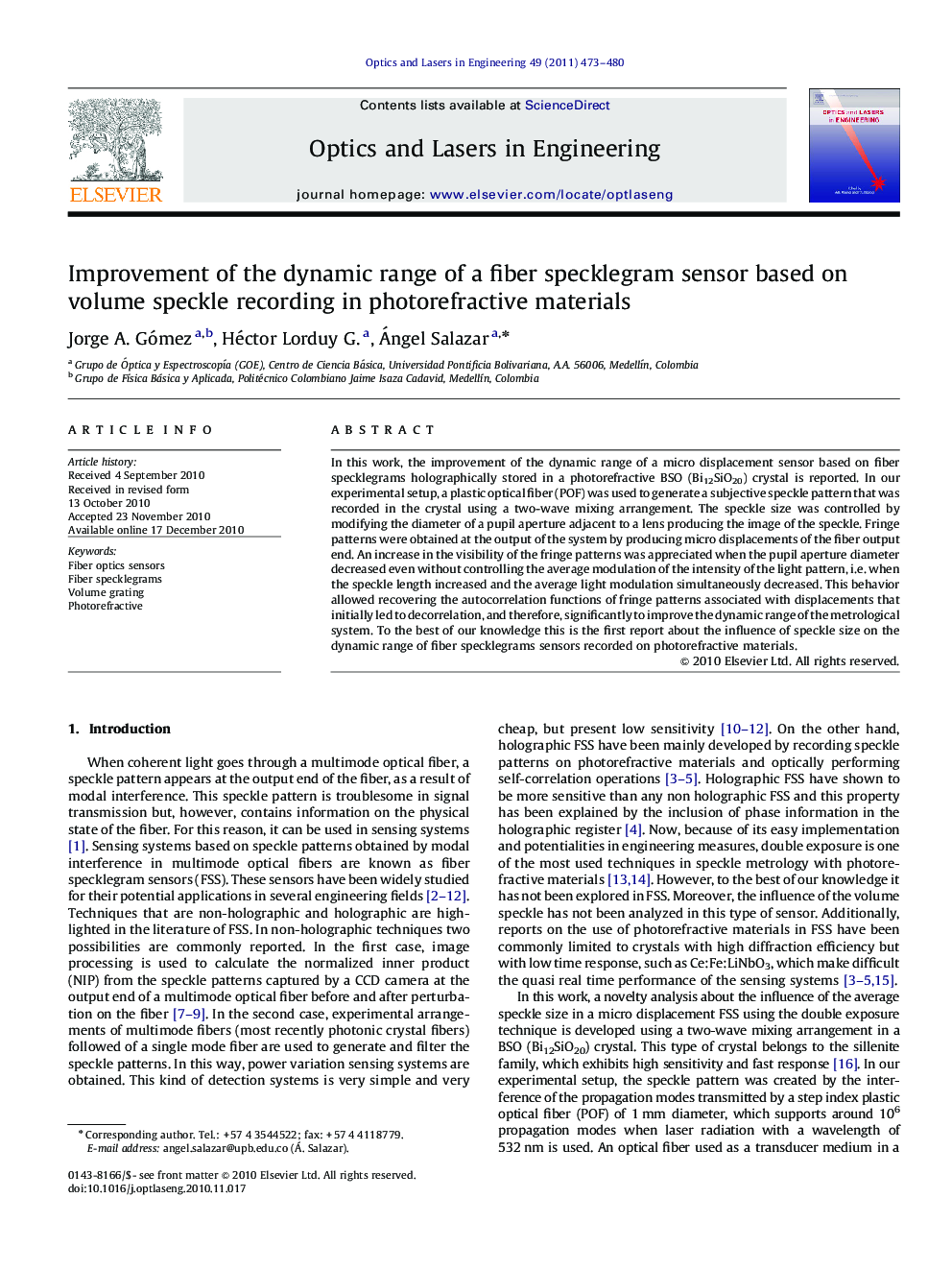| Article ID | Journal | Published Year | Pages | File Type |
|---|---|---|---|---|
| 735045 | Optics and Lasers in Engineering | 2011 | 8 Pages |
In this work, the improvement of the dynamic range of a micro displacement sensor based on fiber specklegrams holographically stored in a photorefractive BSO (Bi12SiO20) crystal is reported. In our experimental setup, a plastic optical fiber (POF) was used to generate a subjective speckle pattern that was recorded in the crystal using a two-wave mixing arrangement. The speckle size was controlled by modifying the diameter of a pupil aperture adjacent to a lens producing the image of the speckle. Fringe patterns were obtained at the output of the system by producing micro displacements of the fiber output end. An increase in the visibility of the fringe patterns was appreciated when the pupil aperture diameter decreased even without controlling the average modulation of the intensity of the light pattern, i.e. when the speckle length increased and the average light modulation simultaneously decreased. This behavior allowed recovering the autocorrelation functions of fringe patterns associated with displacements that initially led to decorrelation, and therefore, significantly to improve the dynamic range of the metrological system. To the best of our knowledge this is the first report about the influence of speckle size on the dynamic range of fiber specklegrams sensors recorded on photorefractive materials.
Research Highlights►An optical fiber with a high quantity of propagation modes allows implementing a double exposure fiber specklegram in volume media. ►Diffraction efficiency increases when the pupil’s aperture decreases without modulation control. ►The increase in diffraction efficiency improves the dynamic range of a fiber specklegram sensor.
